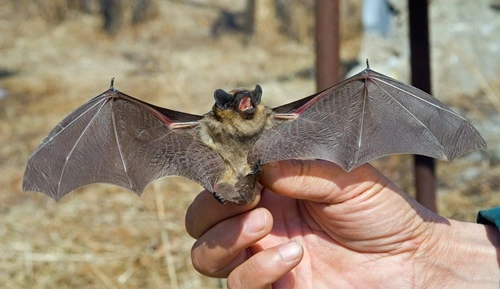Yes, in most cases, it is illegal to kill bats in the United States without proper authorization. Bats are federally protected under the Endangered Species Act (ESA) and the Migratory Bird Treaty Act (MBTA) in specific cases. Many states also have additional laws protecting bats due to their ecological importance. Violations can result in significant fines and other penalties.
Legal Protections for Bats in the United States
1. Federal Laws
- Endangered Species Act (ESA): Many bat species, such as the Indiana bat and the gray bat, are listed as endangered or threatened under the ESA. Killing or harming these species is strictly prohibited unless authorized through a federal permit.
- Migratory Bird Treaty Act (MBTA): While primarily focused on birds, some provisions may indirectly affect bat habitats and their protection.
2. State Regulations
- States often implement their own wildlife protection laws for bat species. In states like California and Texas, killing bats is prohibited without specific permits, even if they are causing a nuisance.
- Bats are commonly classified as non-game wildlife, meaning they cannot be hunted or trapped without authorization.
3. Disease Control Measures
- Federal agencies have increased protections for bats to combat threats like white-nose syndrome, a fungal disease that has devastated bat populations across North America.
When Is Killing a Bat Permissible?
Killing a bat is only allowed under specific circumstances and with proper authorization.
1. Immediate Threat to Human Safety
- If a bat poses an immediate threat, such as aggressive behavior or signs of rabies, killing it may be allowed under self-defense laws. However, these cases must be reported to local health or wildlife authorities.
2. Nuisance Control with a Permit
- Property owners dealing with a significant bat infestation may apply for a nuisance wildlife permit. These permits allow for the legal removal or eradication of bats under strict conditions.
- Non-lethal methods, such as exclusion, are usually required before a permit for lethal action is granted.
3. Research and Conservation Permits
- Scientific studies or conservation efforts involving bats may require handling or euthanizing bats, but these actions are only permitted with federal or state authorization.
Penalties for Killing Bats Illegally
Violating federal or state bat protection laws can result in serious consequences:
- Federal Penalties (ESA Violations)
- Fines of up to $50,000 per violation.
- Up to one year in prison for harming or killing an endangered bat species.
- State Penalties
- Additional fines and penalties may apply depending on state laws. For example, states may impose civil restitution fees for harming protected wildlife.
- Civil and Criminal Charges
- Repeat violations or intentional harm to bats can result in misdemeanor or felony charges, especially for federally protected species.
Why Are Bats Protected?
1. Ecological Importance
- Bats play a critical role in controlling insect populations, including mosquitoes and agricultural pests, saving billions of dollars annually in crop protection.
- They are also pollinators and seed dispersers for various plants.
2. Vulnerability to Decline
- Many bat species face significant threats from habitat loss, disease, and human activity. White-nose syndrome alone has killed millions of bats in North America, pushing some species closer to extinction.
Legal and Humane Ways to Handle Bat Problems
1. Exclusion Methods
- Seal entry points to prevent bats from roosting in attics or buildings. Exclusion is the most common and humane method for managing bats.
2. Professional Assistance
- Hire licensed wildlife control professionals who are trained to handle bat removal legally and safely.
3. Preventive Measures
- Install bat houses on your property to encourage bats to roost in non-invasive areas. This preserves their ecological benefits while keeping them away from human spaces.
Related FAQs
Q1. Is it illegal to kill bats everywhere in the U.S.?
Ans: Yes, most states prohibit killing bats, and many species are federally protected. Exceptions exist for immediate threats or authorized permits.
Q2. What should I do if there’s a bat in my home?
Ans: Safely contain the bat in a room, open windows or doors, and allow it to leave. If it does not leave, contact a wildlife professional.
Q3. Are all bat species protected?
Ans: While not all bats are federally protected, many states have laws safeguarding native bat populations. Endangered species have additional protections.
Q4. Can bats be relocated instead of killed?
Ans: Yes, relocation or exclusion methods are strongly encouraged over lethal actions. Permits may be required for relocation.
Q5. What happens if I accidentally kill a bat?
Ans: Report the incident to local wildlife authorities immediately. Accidental killings may not result in penalties if reported promptly and honestly.
Q6. How can I prevent bats from entering my home?
Ans: Seal cracks and gaps in your home’s exterior, use screens on windows, and install chimney caps to block entry points.
Conclusion
Killing bats is illegal in most cases due to their ecological importance and legal protections under state and federal laws. If bats pose a problem, explore legal and humane methods such as exclusion or professional wildlife assistance. Understanding the laws surrounding bats helps ensure their conservation while addressing human-wildlife conflicts responsibly.


